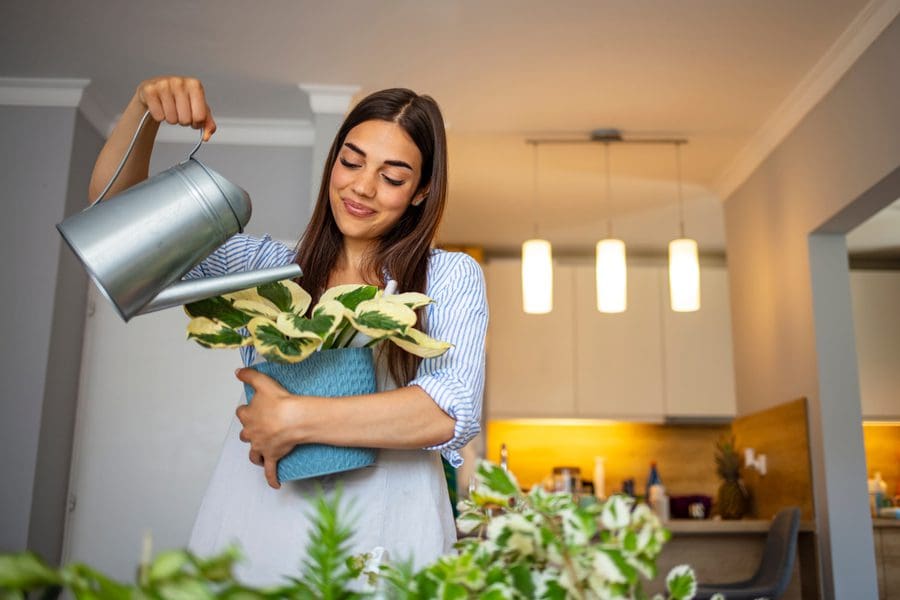Clean air is hard to come by, especially in big cities. Still, according to the Environmental Protection Agency, the air in our homes “can be more seriously polluted than the outdoor air in even the largest and most industrialized cities.” Air purifiers help to combat indoor toxins, but they can be expensive. Instead, consider investing in houseplants, which can purify the air in your home and add to the aesthetics. NASA conducted a Clean Air Study in the late ‘80s that explained plants’ abilities to purify the indoor air. Here are some of our favorite easy-to-care-for plants that can help purify the air in your home.

(image via the sill)
Marble Queen Pothos (Devil’s Ivy) ($23, shop here)
Difficulty: Easy
Details: Also known as pothos, devil’s ivy is a fast-growing climber with waxy, heart-shaped leaves variegated with bright yellow and green. The easy-care plant can thrive in almost any environment, so beginner gardeners can breathe a sigh of relief.
Toxins Removed: Benzene, formaldehyde, toluene, and xylene.
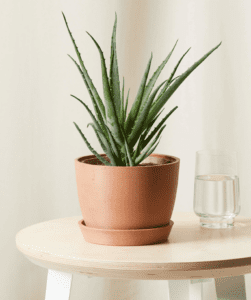
(image via bloomscape)
Hedgehog Aloe ($39, shop here)
Difficulty: Easy
Details: The versatile aloe vera plant may be known for its anti-inflammatory properties and post-sun care, but it’s just as effective in clearing the air. It will thrive in any sunny spot in your home.
Toxins Removed: Benzene and formaldehyde.
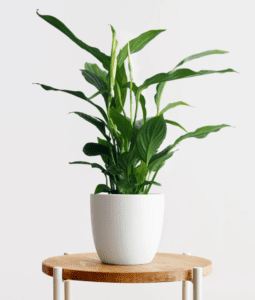
(image via ansel & ivy)
Peace Lily ($42, shop here)
Difficulty: Easy
Details: Easy to care for, the peace lily makes a graceful addition to any room, especially one with low lighting. The plant is known for its elegant white flowers and glossy green leaves. Because of its air-purification ability, the peace lily is also said to help stop snoring.
Toxins Removed: Ammonia, benzene, formaldehyde, toluene, trichloroethylene, and xylene.
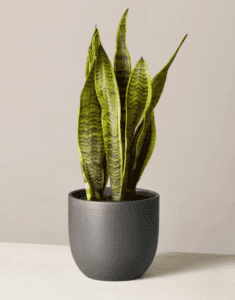
(image via the sill)
Snake Plant Laurentii ($57, shop here)
Difficulty: Easy
Details: This succulent plant is characterized by its sharp, upright leaves and tall, statuesque body – perfect for tight spaces. The snake plant does best with low-level care, as it can grow in all lighting and thrives in dry conditions.
Toxins Removed: Benzene, formaldehyde, toluene, trichloroethylene, and xylene.
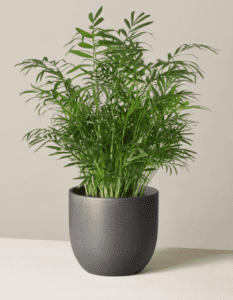 (image via the sill)
(image via the sill)
Parlor Palm ($57, shop here)
Difficulty: Easy
Details: The parlor palm has a full, lush body of deep-green foliage, making it a perfect tabletop plant. It’s slow-growing and easy to care for, thanks to its ability to thrive in various lighting conditions.
Toxins Removed: Ammonia, benzene, formaldehyde, toluene, trichloroethylene, and xylene.
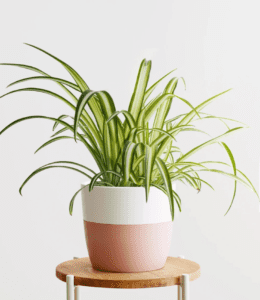
(image via ansel & ivy)
Spider Plant ($76, shop here)
Difficulty: Easy
Details: Known to survive in just about any environment, the spider plant is an easy-going option for newbies. It is characterized by its striped leaves and sprawling growth.
Toxins Removed: Formaldehyde, toluene, and xylene.
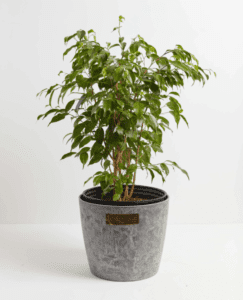
(image via lively root)
Weeping Fig (Ficus Benjamina) ($86, shop here)
Difficulty: Easy
Details: The ficus can grow between 2 to 10 feet tall and thrives in humid environments and bright, indirect light. It has a slender trunk and lush green leaves that cascade downward.
Toxins Removed: Formaldehyde, toluene, and xylene.
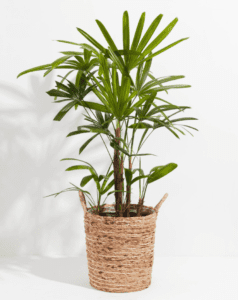
(image via lively root)
Difficulty: Easy
Details: The lady palm, which can grow up to 15 feet tall, is a popular houseplant for both indoors and out. It has multiple layered stems and elegant fan-shaped fronds.
Toxins Removed: Ammonia, benzene, formaldehyde, toluene, trichloroethylene, and xylene.
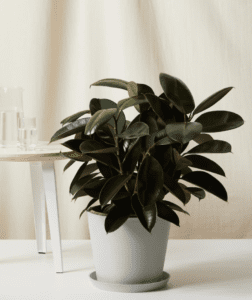
(image via bloomscape)
Burgundy Rubber Tree ($169, shop here)
Difficulty: Easy
Details: This hardy plant produces lots of oxygen while also eliminating toxins, mold, and bacteria from the air. The rubber tree is known for its thick, glossy leaves that range from green to burgundy red or almost black. It can grow up to 6 to 10 feet tall indoors.
Toxins Removed: Formaldehyde.
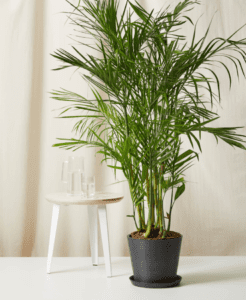
(image via bloomscape)
Bamboo Palm ($199, shop here)
Difficulty: Easy
Details: The bamboo palm fills out large spaces nicely, reaching heights between 4 to 12 feet. It grows taller with more sunlight and thrives in humid environments.
Toxins Removed: Benzene, formaldehyde, toluene, trichloroethylene, and xylene.

